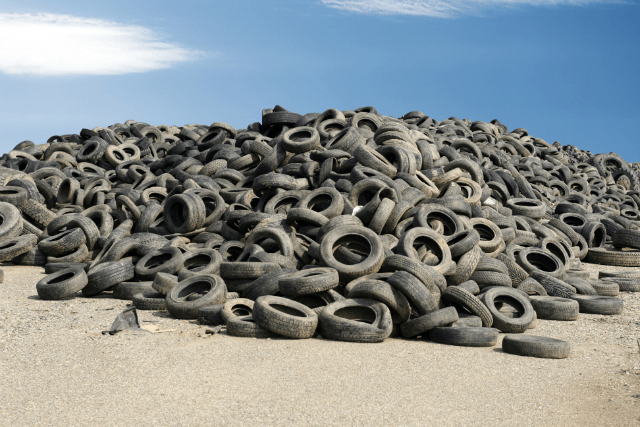Here is an interesting article about what happens to old tires when they are no longer usable for their initial purpose. The author, Ron Loyd is one of the leading experts in the field of tire recycling. His company, Environmental Molding concepts is one of our primary suppliers of rubber tiles for decking, playground and equine applications.
- Bob

By Ron Loyd
Vice President, Sales and Marketing
Environmental Molding Concepts
There are nearly 300 million tires discarded every year in America. Where do all those tires go? At one time they wound up in huge tire piles spread across the U.S.. Back in 1996 the States began to get serious about cleaning up those piles to eliminate their serious hazard. Today all but a very few of those tire piles have been cleaned up and a new industry emerged to deal with the ongoing generation of waste tires.
So where do all those tires go? If you pay attention and look around your environment you’re likely to see where a lot of those tires go. From the roads you drive on to the parks your kids play in to the sports fields you see on television, recycled tire rubber, or crumb rubber as it’s called in the industry, is a part of our everyday lives.
A hundred years ago tires were made from natural rubber, you know, the kind that comes from trees. These tires of yesteryear wore out quickly and had to be changed more frequently resulting in the build-up of waste tire piles. Today, tires are made mostly from synthetic rubber, a petrochemical, that lasts much longer in use and for just about an eternity after the tread wears out.
These waste tires have become a steady stream of raw materials for emerging markets. The durability and physical properties of synthetic rubber makes it a great raw material for many applications such as rubber modified asphalt, artificial turf infill, all kinds of mats and tiles and pads for a variety of uses and even as a substitute or filler for virgin rubber products such as new tires.Some well known applications of crumb rubber products include the new children’s playground at the White House, the Synthetic Turf Field in the Mercedes-Benz Super Dome (home of the 2013 Super Bowl) and Yokohama Stadium, home of the Yokohama Bay Stars, perennial Japanese Baseball contenders.
In addition to these well known applications, crumb rubber is also used in civil engineering applications to replace heavier back fill in embankment construction and as a sound and vibration deadening material along heavily traveled railways in populated areas. It also makes a wonderful fuel source for highly specialized manufacturing environments such as paper mills and cement factories that can burn the tires and tire chips at such high heat that the tires are fully consumed and the process creates no ash and lower Sulfur emissions than burning coal.
The next time you go to change your tires, feel comfortable in knowing that the tires you replace may very well be put to use as a newly developed product that will keep them out of the landfill and reduce the burden on our natural resources. If you want to make the extra effort, make sure the retailer of your choice has partnered with a reputable firm to ensure your waste tires go to a recycling facility that will turn them into a new, innovative, useful product that benefits our communities and our environment.
